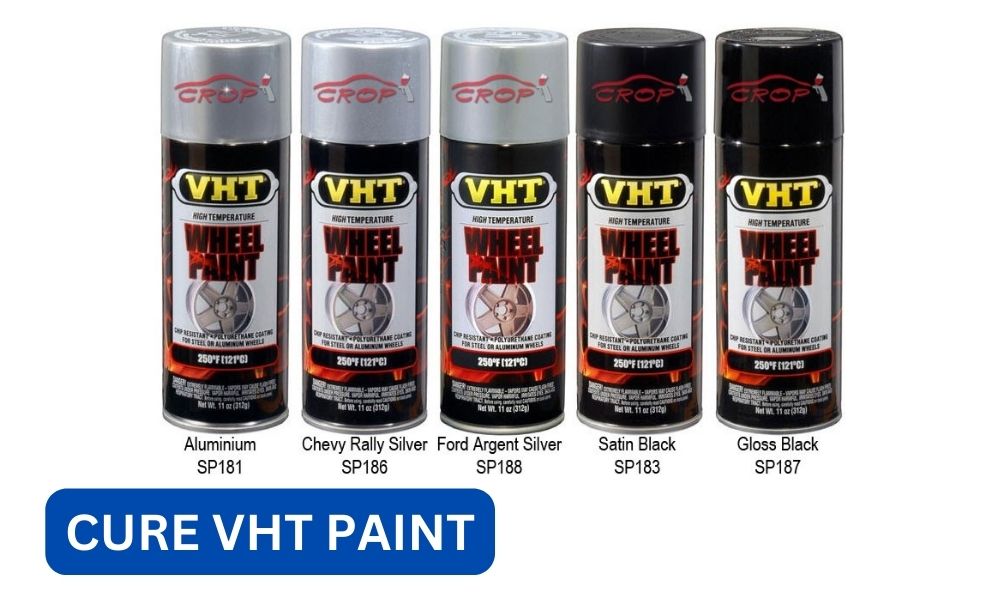VHT (Very High Temperature) paint is a specialized type of paint designed to withstand extreme temperatures. It is commonly used on automotive parts, exhaust systems, grills, and other surfaces that are exposed to high heat. While VHT paint offers many benefits, it is crucial to properly cure the paint to ensure its durability and performance. In this article, we will explore the consequences of not curing VHT paint and why it is essential to follow the recommended curing process.
Contents
Understanding VHT Paint
VHT paint is formulated with special additives that allow it to withstand temperatures up to 2000°F (1093°C). This makes it ideal for applications where regular paint would fail or deteriorate due to heat exposure. VHT paint is available in various colors and finishes, providing both aesthetic appeal and functional protection.
The Importance of Curing VHT Paint
Curing is the process of heating the painted surface to a specific temperature for a certain duration. This process allows the paint to chemically bond and form a strong, durable finish. Failure to properly cure VHT paint can lead to several negative consequences:
1. Reduced Heat Resistance
One of the primary reasons for using VHT paint is its ability to withstand high temperatures. However, if the paint is not cured correctly, it may not achieve its full heat resistance potential. This can result in the paint breaking down or blistering when exposed to extreme heat, compromising its protective properties.
Read:What a man might be made of 7 little words?2. Poor Adhesion
Curing plays a crucial role in ensuring proper adhesion of the paint to the surface. Without adequate curing, the paint may not bond effectively, leading to poor adhesion and potential peeling or flaking. This not only affects the appearance of the painted surface but also reduces its longevity.
3. Reduced Durability
Properly cured VHT paint forms a hard and durable finish that can withstand the rigors of high heat and other environmental factors. When the paint is not cured, it may remain soft or brittle, making it more susceptible to scratches, chips, and other forms of damage. This compromises the overall durability and longevity of the painted surface.
The Curing Process
The curing process for VHT paint typically involves heating the painted surface to a specific temperature for a specific duration. The exact curing instructions may vary depending on the specific product and manufacturer. However, the general steps involved in curing VHT paint are as follows:
1. Preparing the Surface
Before applying VHT paint, it is essential to prepare the surface properly. This involves cleaning the surface to remove any dirt, grease, or contaminants that may hinder adhesion. Additionally, sanding the surface lightly can help create a better bond between the paint and the substrate.
Read:What a wonderful world – mark hayes?2. Applying the Paint
Once the surface is prepared, apply the VHT paint according to the manufacturer’s instructions. It is crucial to follow the recommended number of coats and drying times between each coat. Applying thin, even coats ensures better adhesion and a smoother finish.
3. Curing the Paint
After the final coat of paint has been applied, the curing process begins. This typically involves heating the painted surface to a specific temperature using an oven or heat gun. The recommended curing temperature and duration can usually be found on the product label or manufacturer’s instructions.
4. Cooling and Finalizing
Once the paint has been cured, allow the surface to cool down naturally. Avoid exposing the painted surface to any extreme temperature changes during this cooling period. Once cooled, the paint should have achieved its full heat resistance and durability.
Real-World Consequences
To understand the consequences of not curing VHT paint, let’s consider a few real-world scenarios:
Case Study 1: Automotive Exhaust System
Imagine a car enthusiast who decides to paint their exhaust system with VHT paint but neglects to cure it properly. Over time, the extreme heat generated by the exhaust causes the paint to blister and peel. Not only does this compromise the appearance of the exhaust system, but it also exposes the underlying metal to potential corrosion and damage.
Read:What does it mean to sweep in the dream?Case Study 2: Barbecue Grill
A homeowner decides to paint their barbecue grill with VHT paint to protect it from the intense heat generated during cooking. However, they fail to follow the recommended curing process. As a result, the paint starts to chip and flake off after a few uses, leaving the grill vulnerable to rust and deterioration. The lack of proper curing also affects the overall lifespan of the grill.
The Importance of Following Manufacturer’s Instructions
Manufacturers of VHT paint provide specific instructions for application and curing. It is crucial to follow these instructions carefully to ensure the best results. Here are a few reasons why following the manufacturer’s instructions is essential:
- Manufacturers have conducted extensive research and testing to determine the optimal curing process for their specific paint formulation.
- Deviation from the recommended curing process may void any warranty provided by the manufacturer.
- Following the instructions ensures that the paint achieves its full heat resistance, adhesion, and durability.
- Proper curing enhances the overall performance and longevity of the painted surface.
Summary
Curing VHT paint is a critical step in ensuring its durability and performance. Failure to properly cure the paint can result in reduced heat resistance, poor adhesion, and reduced durability. By following the manufacturer’s instructions and taking the time to properly cure VHT paint, you can enjoy the full benefits of this specialized paint, including its ability to withstand extreme temperatures and provide long-lasting protection. Remember, a little extra effort during the curing process can go a long way in preserving the quality and appearance of your painted surfaces.









